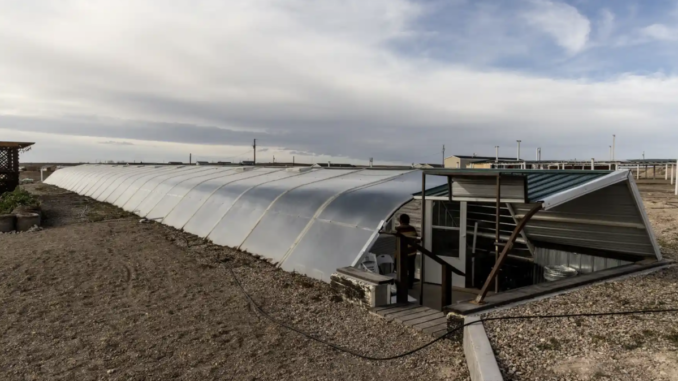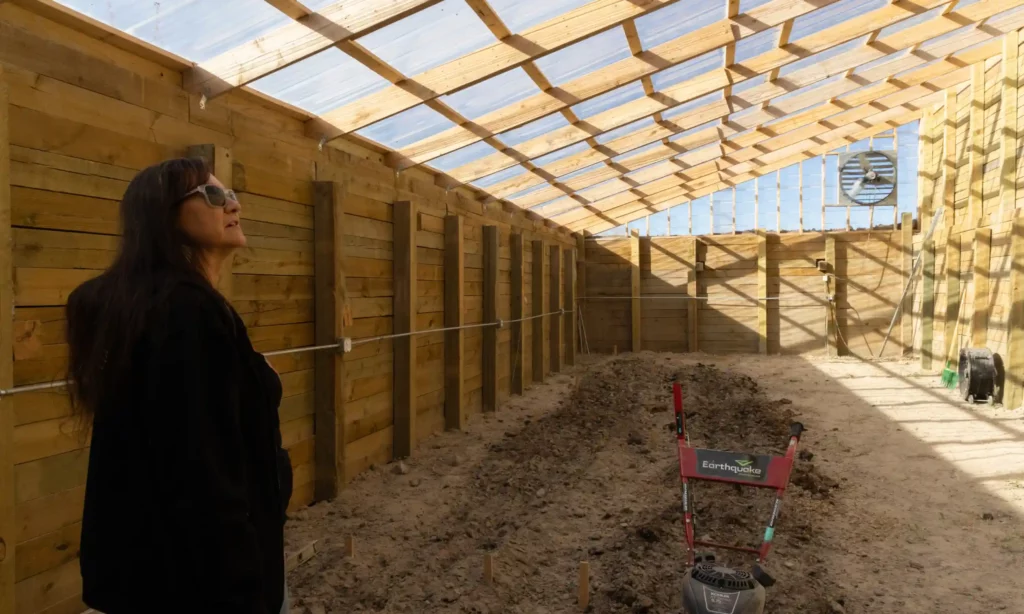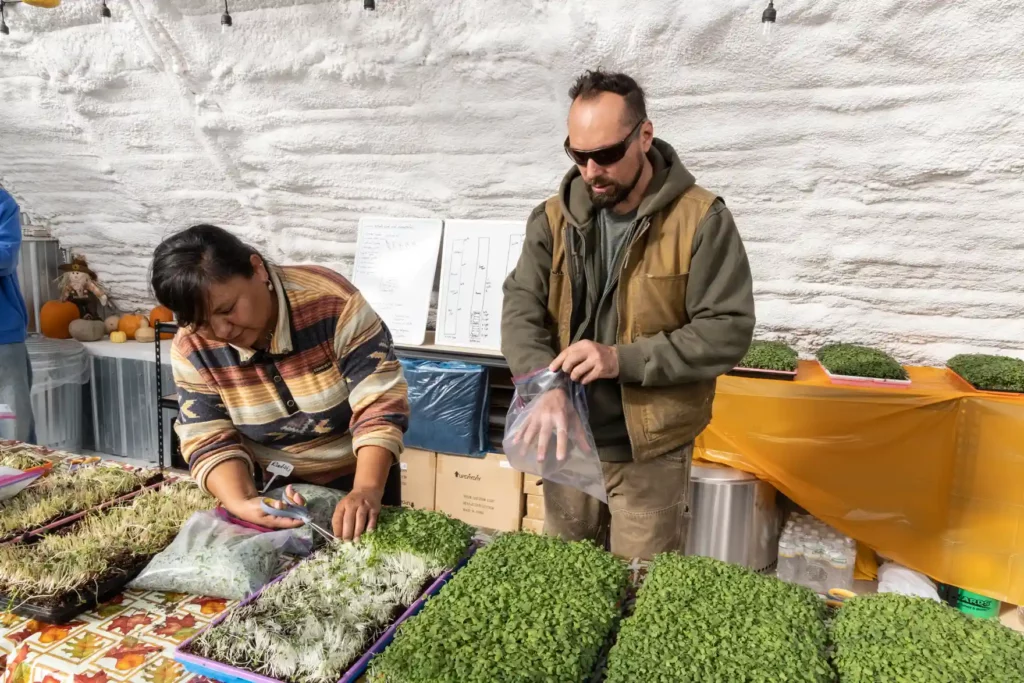
An Indigenous reservation has a novel way to grow food – below the earth’s surface
Underground Greenhouses | The Guardian |
Underground greenhouses are helping people to take back control of their nutrition and ease farming amid the climate crisis.
Near the southern border of the Pine Ridge Reservation in South Dakota, a curved translucent roof peeks out a few feet above the dusty plains. It’s a blustery November afternoon and the last remaining greens outside are fading fast. But below ground, at the bottom of a short flight of stairs, the inside of this 80ft-long sleek structure is bursting with life – pallets of vivid microgreens, potato plants growing from hay bales and planters full of thick heads of Swiss chard and pak choi. Two people bend over the pallets, using scissors to harvest delicate sprouts of microgreens.
Above: An underground greenhouse currently under construction in Pine Ridge. Photograph: Dawn E. LeBeau/The Guardian
This is an underground greenhouse, or walipini, and the harvesters are members of the Oglala Sioux Tribe. It is one of at least eight underground greenhouses that, over the past decade, have been built or are being constructed on the reservation – which has one of the highest poverty rates in the US. Some hope they can help solve the interconnected problems of the lack of affordable, nutritious food and the difficulties of farming in the climate crisis.
Above: In an underground greenhouse, Raycen Raines (right) helps harvest microgreens that are donated to the community. Photograph: Dawn E. LeBeau/The Guardian
Underground greenhouses, emerged three decades ago in Bolivia as a way of trying to help rural communities gain food security. Their conditions can be controlled to protect the crops from fierce storms and extreme temperatures.
Those underground on the reservation use geothermal energy to keep a stable year-round temperature of about 52F, and some use a series of tubes that capture and circulate heat from deeper underground. At the same time, the greenhouses absorb and bank heat from the sun.
Read the Entire Original Article Here: https://www.theguardian.com/environment/2022/dec/03/south-dakota-reservation-food-desert-residents-transforming-crop-oasis


